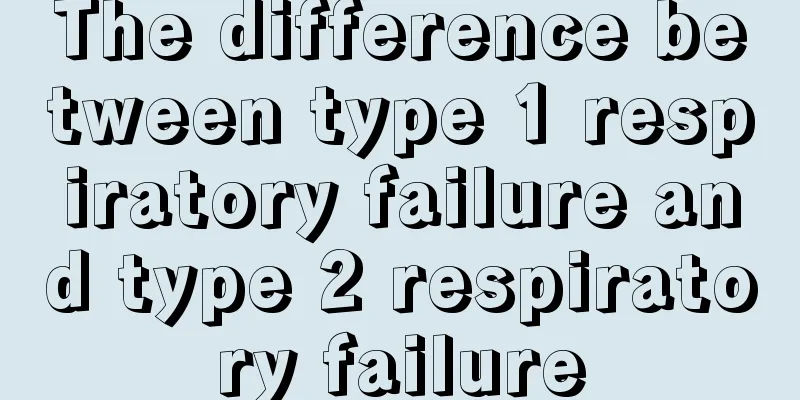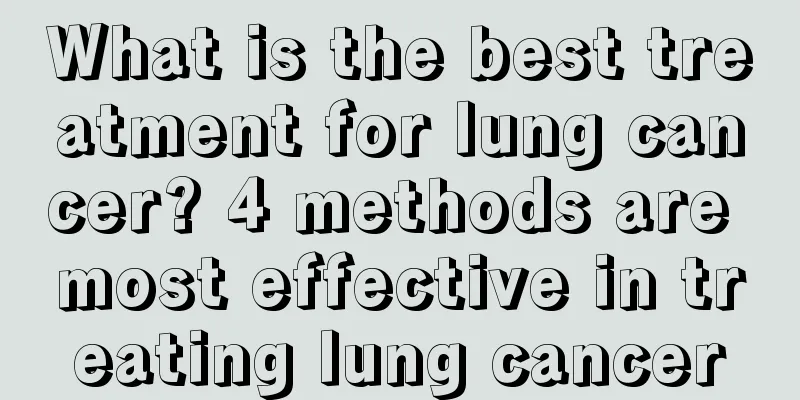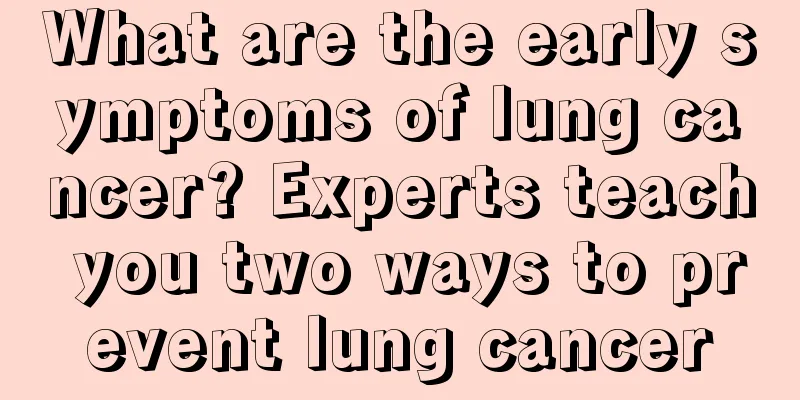The difference between type 1 respiratory failure and type 2 respiratory failure

|
Respiratory failure, also known as respiratory failure, is common in the respiratory system. Respiratory failure may occur within days or hours, and the condition is relatively serious. In this case, you need to pay attention to certain conditioning and rectification to avoid some complications. It is very helpful for all aspects of the body. In addition, you also need to understand what is the difference between type 1 respiratory failure and type 2 respiratory failure? The difference between type 1 respiratory failure and type 2 respiratory failure should be noted in differential diagnosis Core Tip: Respiratory failure is a common disease and complication in respiratory medicine. Acute respiratory failure can occur within days or hours and is a serious condition that requires timely rescue to save the patient's life. Chronic respiratory failure develops slowly over weeks or longer, and the body can produce a series of compensatory responses. Respiratory failure not only causes breathing difficulties, but also often affects other organs. Therefore, clearly distinguishing the types of respiratory failure is important for timely diagnosis and treatment guidance. Respiratory failure is a disorder of lung ventilation and gas exchange due to various reasons, which results in the inability to carry out effective gas exchange, further leading to human hypoxia with or without carbon dioxide retention, and then causing a series of clinical syndromes of physiological function and metabolic disorders. The diagnostic criteria for respiratory failure are: PaO2 < 60 mmHg or PaCO2 > 50 mmHg when breathing air at rest at sea level. According to pathophysiology and arterial blood gas analysis, it can be divided into type I respiratory failure and type II respiratory failure. The following introduces the difference between type I respiratory failure and type II respiratory failure. 1. Based on arterial blood gas analysis Type I respiratory failure, hypoxia but no CO2 retention, seen in cases of ventilation dysfunction. Type II respiratory failure is caused by lack of O2 and CO2 retention due to insufficient alveolar ventilation, which is common in chronic obstructive pulmonary disease (COPD), upper airway obstruction, respiratory muscle dysfunction, etc. Type I respiratory failure is characterized by PaO2 < 60 mmHg and normal or decreased PaCO2; type II respiratory failure is characterized by PaO2 < 60 mmHg and PaCO2 > 50 mmHg. 2. Treatment methods. Type I respiratory failure requires high-flow oxygen therapy, while type II respiratory failure must be treated with low-flow oxygen therapy. Type I respiratory failure is caused by hypoxia but no carbon dioxide retention, mainly due to insufficient oxygen, such as airway obstruction, while the body's ability to eliminate carbon dioxide is still there. Type II respiratory failure is characterized by insufficient oxygen intake and poor carbon dioxide elimination. When high oxygen therapy is performed, the high oxygen concentration will inhibit the respiratory center, so low-concentration oxygen therapy is required. 3. Oxygen therapy flow Type I respiratory failure oxygen flow should be >3 L/min (concentration >30%) Type II respiratory failure oxygen flow should be <3 L/min (concentration <30%) Respiratory failure is often accompanied by a history of bronchial, lung, pleural, pulmonary vascular, cardiac, neuromuscular or severe organic diseases, and respiratory tract infection is a common cause. The clinical symptoms are mostly dyspnea, shortness of breath, psychoneurological symptoms, and cardiovascular system symptoms. The diagnosis is mainly based on blood gas analysis, and the differential typing refers to the above blood gas analysis results. Only by clearly classifying respiratory failure can we provide correct guidance on the method of oxygen administration. In addition, maintaining airway patency, preventing and treating multiple organ dysfunction, and actively treating the primary disease are also principles for treating respiratory failure. |
<<: What is the use of fitness
>>: Does flour have a shelf life?
Recommend
This is what eyelid liposuction is all about
Blister eyes, also called swollen eye blisters in...
Is it useful to take Sanjin tablets for acute cystitis? Can it cure it completely?
Many people should be familiar with cystitis. Bot...
What are the symptoms and treatments of ovarian cancer
Ovarian cancer is a common malignant tumor diseas...
What should I do if I have tinnitus in my ears
Simply put, tinnitus is a buzzing feeling in the ...
How to treat dizziness after getting up?
Dizziness after getting up may be caused by anemi...
The correct time to use eye mask
Many people use eye masks to make their eyes look...
Taboos when visiting a newborn baby
In fact, it is very normal for friends and relati...
Abdominal pain is the most obvious early symptom of stomach cancer
The best time to treat a disease is in its early ...
What is the dosage of Acanthopanax senticosus tea?
Acanthopanax tea is a kind of tea made with Acant...
Which hospital is the most authoritative for treating breast cancer
Which hospital is the most authoritative for trea...
Drinking water at these times can cure diseases and prolong life
Many people never seem to care about the timing o...
How long does it take for endometrial cancer to recur?
Endometrial cancer is a malignant tumor that grow...
What medicine can be taken to treat lung cancer? Several symptoms of lung cancer
Many people know about cancer, but they may not k...
How to deal with pilling on woolen coats
In winter, most people wear thick clothes to keep...
What are the prevention methods for prostate cancer
The emergence of prostate cancer has brought grea...









